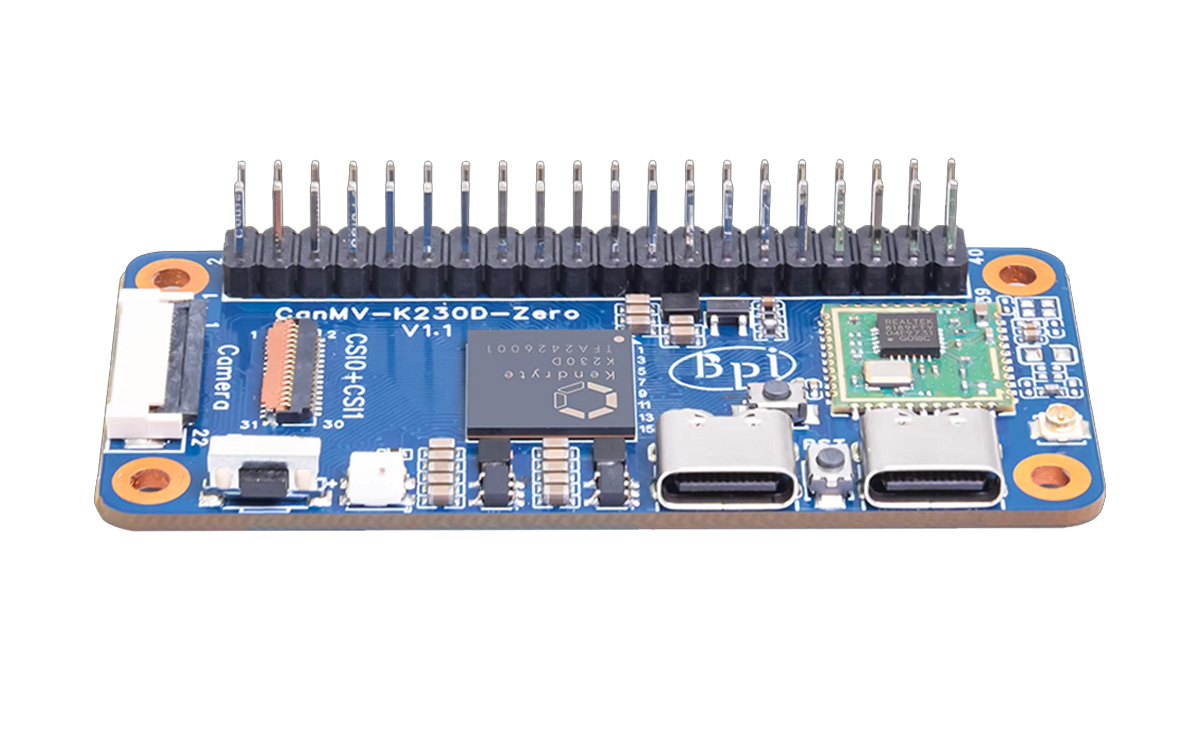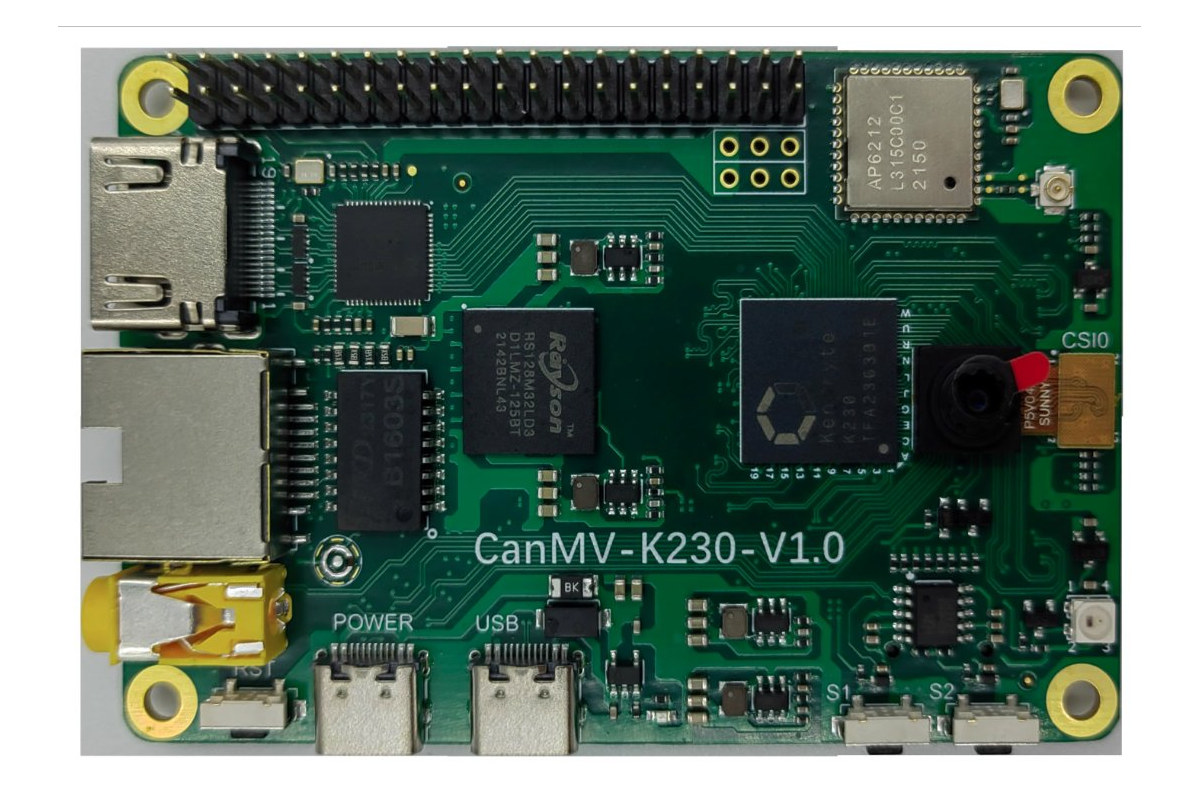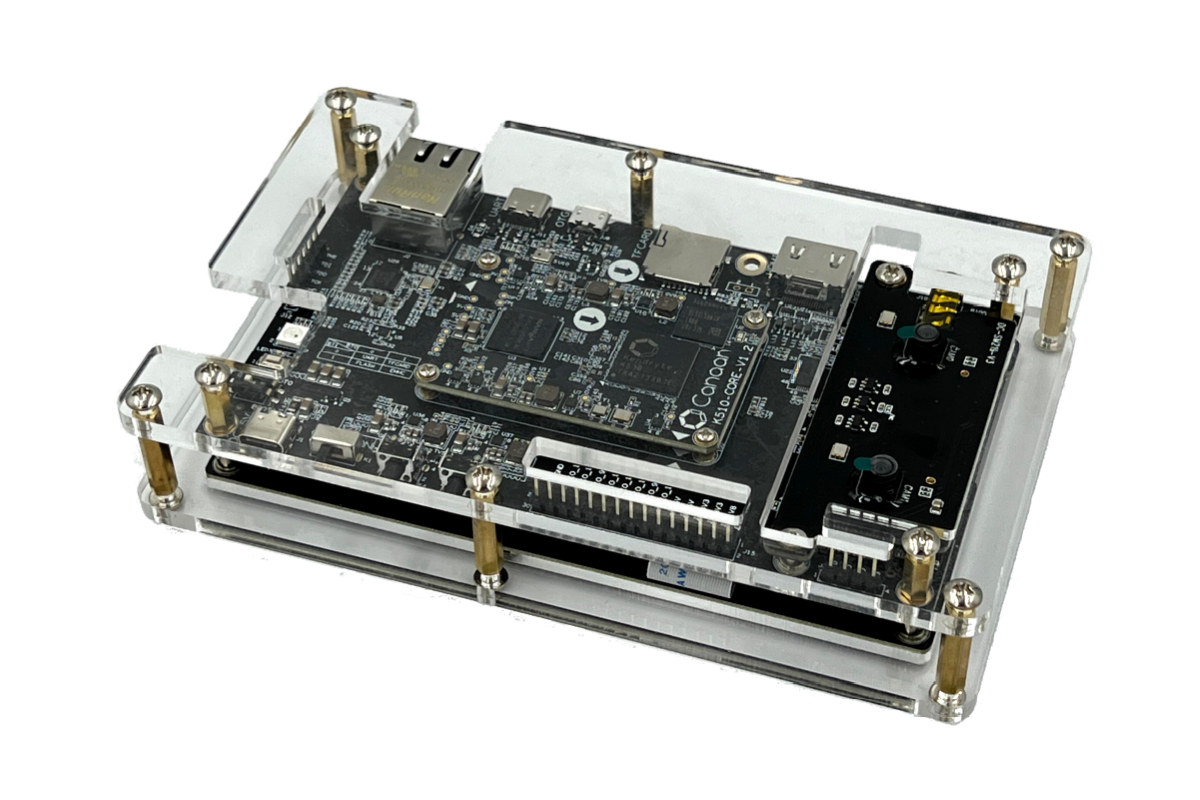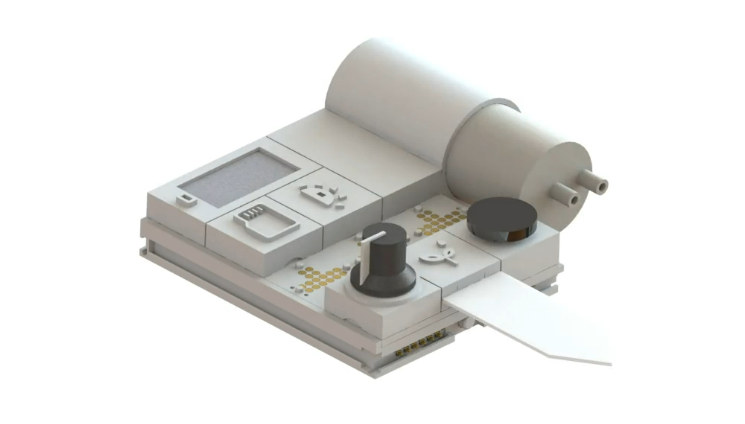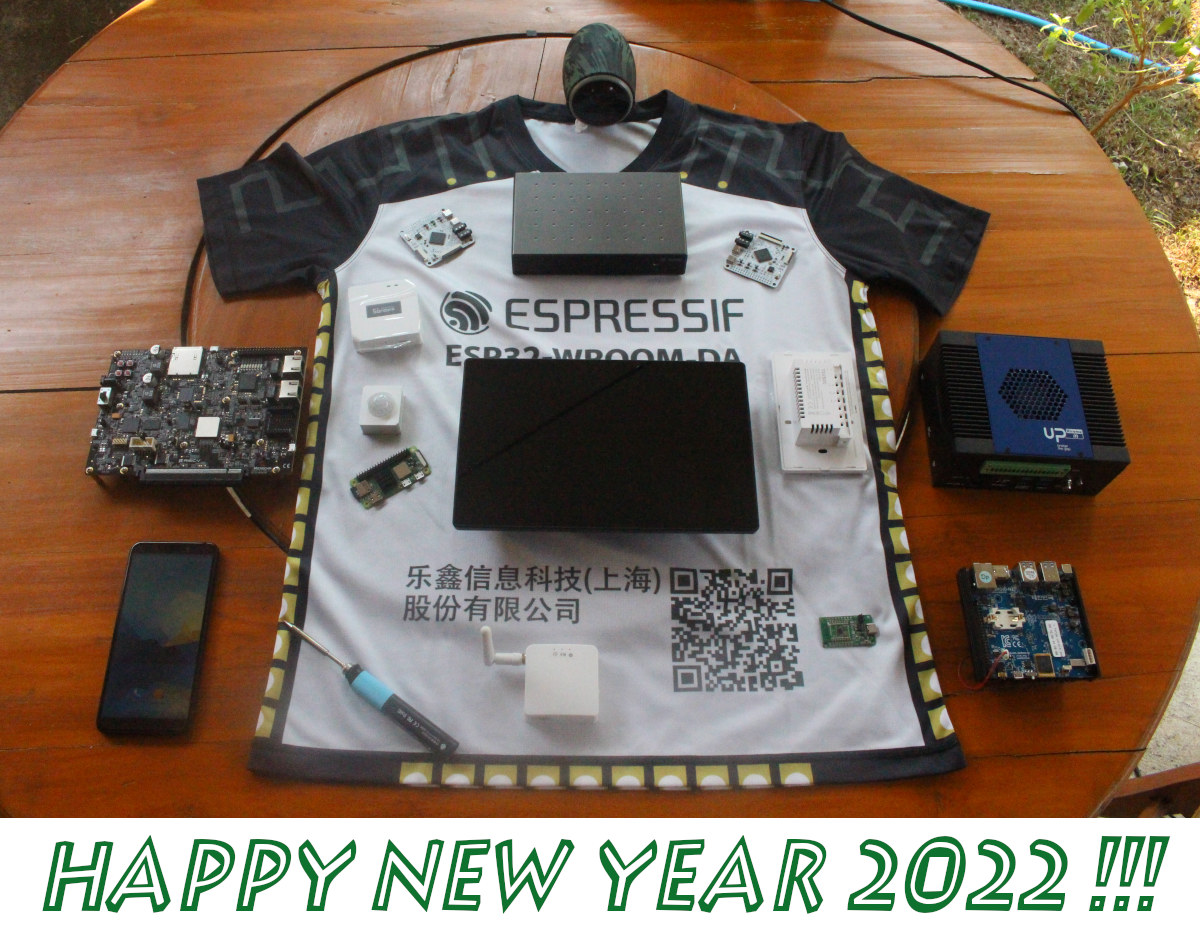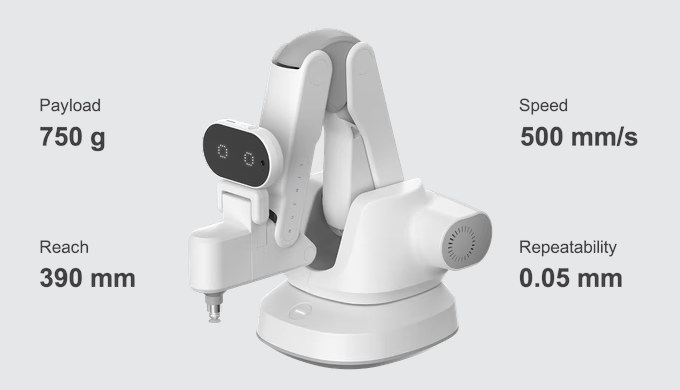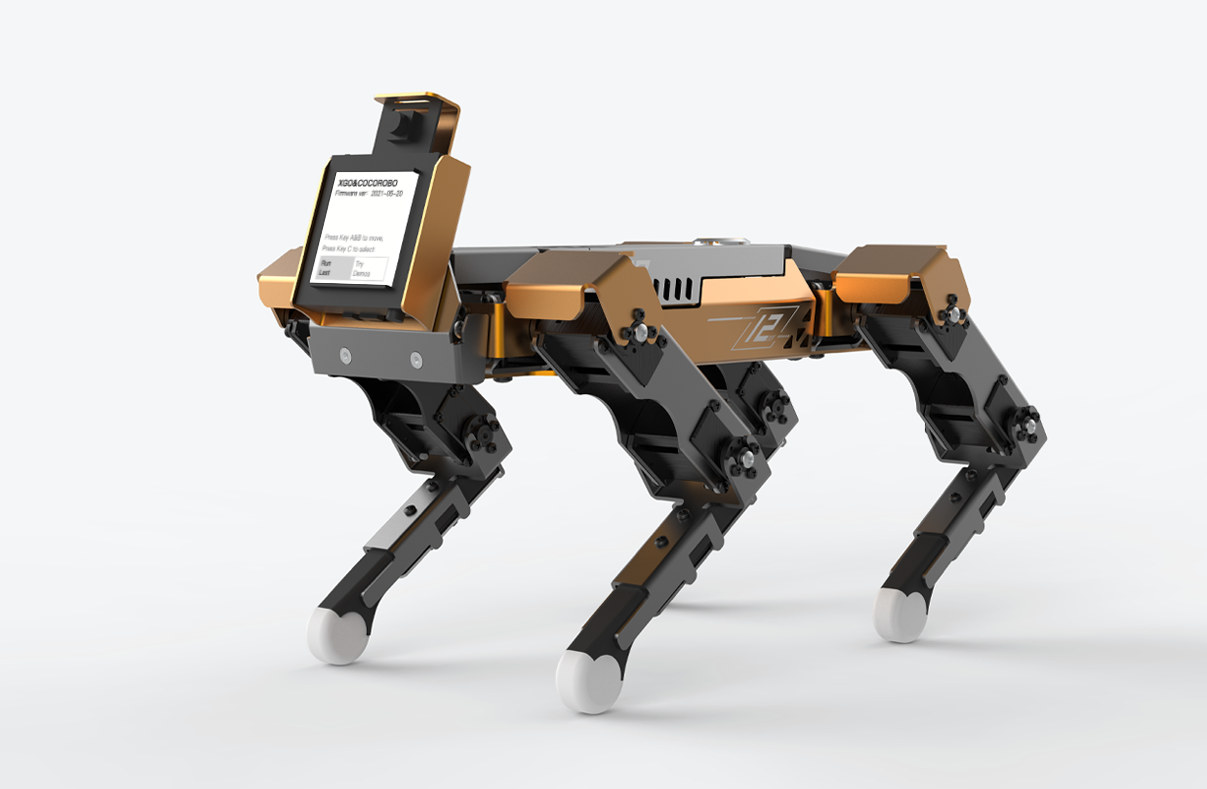The T-Bao AI robot is a compact embedded device/robot that combines an ESP32 and a K210 RISC-V microcontroller and can perform face recognition and robotics applications. This compact device features a 1.54-inch 240×240 capacitive touch screen, a 2MP OV2640 camera, a MAX98357A I2S audio amplifier, a DRV8833 motor driver, an MPU6050 6-axis motion sensor, and an AXP202 PMU for power management. Additionally, it supports USB charging, offers LEGO blocks compatibility, and can move around with integrated caster wheels. These features make it usable for educational projects, robotics, IoT applications, and embedded systems prototyping. LILYGO T-Bao specifications SoCs Kendryte K210 dual-core 64-bit RISC-V processor @ 400 MHz with 8MB on-chip RAM, various low-power AI accelerators delivering up to 0.5 TOPS ESP32-D0WDQ6-V3 dual-core Xtensa LX6 processor, 240 MHz, 16MB Flash, 8MB PSRAM Display – 1.54-inch capacitive touch LCD (240×240) Camera – 2MP OV2640 with rolling shutter, UXGA (1600 x 1200) resolution, 180-degree […]
$29 Banana Pi BPI-CanMV-K230D-Zero features Kendryte K230D RISC-V SoC for AIoT applications
The Banana Pi BPI-CanMV-K230D-Zero is a compact and low-power single-board computer built around the Kendryte K230D dual-core XuanTie C908 RISC-V chip with an integrated third-generation Knowledge Process Unit (KPU) for AI computation. It follows the form factor of the Raspberry Pi Zero or Raspberry Pi Zero 2W board and targets IoT and ML applications. The SBC comes with 128MB of LPDDR4 RAM and uses a microSD card slot for storage. Additional features of this board include dual MIPI-CSI camera inputs for 4K video, a 40-pin GPIO header for I2C, UART, SPI, PWM, and more. Wireless features include 2.4GHz WiFi, USB 2.0 with OTG, and microphone support. These features make this SBC suitable for applications such as AI tasks such as image, video, and audio processing. Banana Pi BPI-CanMV-K230D-Zero Specifications SoC – Kendryte K230D CPU CPU1 – 64-bit RISC-V processor @ 1.6GHz with RVV 1.0 support CPU2 – 64-bit RISC-V processor […]
CanMV-K230 AI development board features Kendryte K230 dual-core 64-bit RISC-V processor
CanMV-K230 is a credit card-sized development board for AI and computer vision applications based on the Kendryte K230 dual-core C908 64-bit RISC-V processor with built-in KPU (Knowledge Process Unit) and various interfaces such as MIPI CSI inputs and Ethernet. The first Kendryte RISC-V AI processor was launched in 2018 with the K210 which I tested with the Grove AI HAT and Maixduino board and found fun to experiment with, but noted that performance was limited. Since then the company introduced the K510 mid-range AI processor with a more powerful 3 TOPS AI accelerator, and the K230 entry-level successor to the K210 – which was planned for 2022 in a 2021 roadmap – has now just been launched and integrated into the CanMV-K230 development board. CanMV-K230 specifications: SoC – Kendryte K230 CPU 64-bit RISC-V processor @ 1.6GHz with RISC-V Vector Extension 1.0, FPU 64-bit RISC-V processor @ 800MHz with support for […]
Canaan K510 CRB RISC-V AI development kit ships with dual-camera module and LCD display
Last summer, Canaan introduced the Kendryte K510 tri-core RISC-V AI processor, now also known as Canaan K510, as an updated version of the Kendryte K210 with a much higher 3 TOPS of performance, but at the time, there were no development board and SDK. But I’ve now just been informed of the availability of the Canaan Kendryte K510 CRB (customer reference platform) AI development kit with camera module and LCD display, as well as a software development kit with U-Boot, Linux, and AI tools which can be used to develop smart audio and computer vision applications. Kendryte K510 CRB-Kit development kit specifications: SoC – Canaan Kendryte K510 dual-core RISC-V64 CPU up to 800MHz and 1x RISC-V DSP up to 800MHz for up to 3 TOPS AI performance, ultra-low-power wake-up VAD, H.264 video encoding up to 2 channels @ 1080p60 System Memory – 512 MB LPDDR3 @ 1600 MHz Storage – […]
Pockit modular Linux computer gets a Raspberry Pi CM4 upgrade
We first wrote about the Pockit modular Linux computer with hot-plugging magnetic blocks about a year ago. The system was based on a STM32+ESP32 mainboard with a socket for an optional Raspberry Pi Compute Module 3 and included magnets and electrical contacts to snap and hot-plug modules/blocks while the computer is running. The developer (Anil Reddy) has made good progress with the project and added the option to use a Raspberry Pi CM4 with Pockit (provided you can find one) to improve performance, for example for computer vision. Other changes include support for AI accelerators, an improved dashboard, home automation integration, and more. Pockit now supports over 80 feature BLOCKS ranging from a rotary encoder to a microSD card reader to various camera types, an HDMI block, AI accelerators, and so on. All of which can be magnetically snapped while the computer is running, and automatically detected in the dashboard. […]
Year 2021 in review – Top 10 posts and statistics
As per tradition, we’ll look back at what happened during the year in the last post, and see what 2022 may have in store, plus the usual statistics from CNX Software website. The biggest story of 2021 has to be the worsening of semiconductors shortages with extremely long lead times, prices of some components going up multiple folds, constant complaints on Twitter about availability and prices. I think I even saw a website, hopefully misconfigured, showing an estimated availability of a specific STM32 MCU in 2037. This also gave rise to opportunities and board redesigns, with MotorComm Ethernet chips replacing some Realtek chips in SBCs such as NanoPi R2C and Orange Pi R1S Plus LTS, and CH9102F showing up as a replacement for CP2104 in some IoT boards. We also got some interesting Arm processors, but sadly the high-expected Rockchip RK3588 got delayed by another year, although it’s getting really […]
HUENIT modular robot arm takes 3D printer, laser engraver, suction, AI camera modules (Crowdfunding)
Most robot arms are designed to carry and manipulate payloads, but HUENIT modular robot arm is much more versatile as besides a traditional suction module, the robot supports modules such as a 3D printer, laser engraver, pen holder for drawings, and a creator module for let people designed their own. The robot arm can hold payloads of up to 750 grams, have a reach of up to 39 cm without module, supports WiFi and Bluetooth connectivity, and can also optionally be fitted with a 2MP AI camera module based on Kendryte K210 RISC-V processor with built-in AI accelerators. HUENIT specifications: Robot arm 4-axis Payload up to 750 grams Reach – 390mm without module Repeatability – 0.05mm Precision – 0.1mm Speed – Up to 500mm/s Storage – MicroSD card slot USB – 1x USB-C port Wireless – WiFI and Bluetooth Misc – UART, external stepper Power Supply – 24V DC input, […]
XGO Mini Pro robot dog features Kendryte K210 AI processor (Crowdfunding)
[Update: Initially published on July 30th, XGO Mini Pro robot dog is now up on Kickstarter. While it was listed on the Kendryte K510 product page, it is only offered with the earlier Kendryte K210 in the crowdfunding campaign] Kendryte K510 RISC-V AI processor is the successor of Kendryte K210 with much more AI processing power (2.5/3 TOPS) that makes it suitable for robotics projects demanding much lower latency and quasi-real-time inference. One of the first products to be compatible with both Kendryte K510/K210 capabilities is Luwu Intelligence Technology’s XGO Mini Pro, a four-legged robot that looks like a dog with a tiny head providing the “smarts” for the system including face detection, image recognition, object tracking, voice recognition, and so on. We first found the description of the robot on Canaan’s website is rather short with an explanation that when equipped with is equipped with a 9-axis IMU and […]



